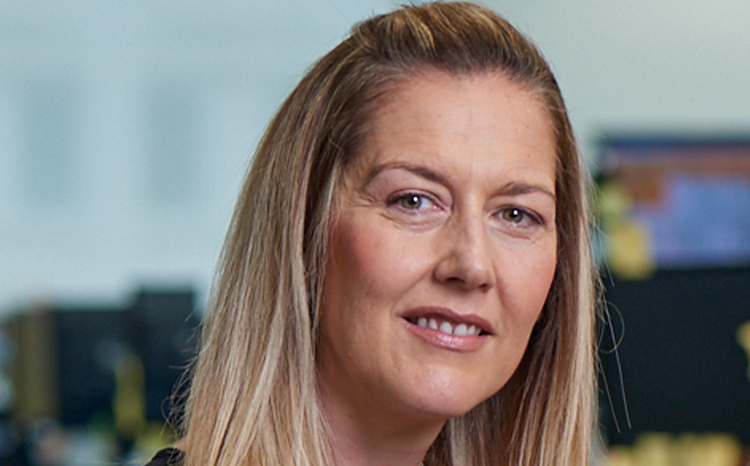How healthcare can mirror the airline industry and maximise time
- 5 October 2021

The airline industry and healthcare are not two things you would usually put together but Jon Payne, technology strategist and innovator at InterSystems, argues they might be able to learn from each other.
The healthcare industry has notoriously lagged behind in its investment in and adoption of information technology and Artificial Intelligence (AI) is no exception. However, the opportunities – and need – to leverage AI for innovation, process improvement, patient and physician satisfaction, and patient outcomes improvement have never been greater.
The Covid-19 pandemic has already created a significant backlog of patients requiring medical appointments. And with GP surgeries in the UK now being urged to resume face-to-face appointments as soon as possible, having the most efficient booking system has never been more critical to ensuring wait times don’t skyrocket – and GPs don’t burn out.
However, according to the NHS, more than 15 million appointments in general practice are wasted each year in England when patients don’t show up (or dial in). This puts the cost of “did not attends” (DNAs) at £216 million – enough to pay for more than 2,300 full-time GPs.
Maximising time
To combat this worrying trend, some healthcare practices are now using machine learning (ML) to intelligently overbook medical appointments – in the same way that airlines overbook flights – to ensure doctors can maximise their time and see someone else in need, if a patient doesn’t show up.
As Covid-19 infections creep up as we head into Autumn and epidemiologists warn of a potential winter crisis, AI-enabled overbooking methods could prove a vital tool in helping to optimise appointment booking for patients and reduce the strain on healthcare personnel and services.
But how exactly does it work?
Let’s say a GP practice provides 30 appointments in a day. If the no show rate is calculated at 14%, four patients a day are going to skip their appointments, leaving GPs waiting around at significant and cumulative cost to the NHS, and other sick patients having to wait even longer for an appointment.
To try to minimise the impact of this, practices could overbook four slots randomly throughout the day or according to their own anecdotal knowledge. More effective, however, would be to use machine learning to predict the probability that a person is not going to show up and overbook the slots with a probability score of over 85%, for example. This probability is calculated by taking all the surgery’s historical data and training the machine learning algorithm on that. It intelligently figures out which features or variables in that data set impacts the outcome, creates a rule set and then applies it to current appointment data.
Minimsing hospital admissions
In a similar way, readmissions are another significant cost for healthcare providers worldwide, but it’s often tricky for organisations to know where they should focus their discharge planning efforts, to ensure they minimise the number of people who come back to hospital.
If you analyse the data, looking at four different parameters – length of stay, the acuity of the admissions, comorbidities, and number of emergency visits – organisations can make a prediction around who is most likely to come back and take action.
Fortunately, trials have shown that if you implement ML, healthcare organisations could save even more money because the technology finds more patients who are likely to return. While week on week, the saving might seem modest, in a hospital with 785 discharges per day, with a readmission rate of 17.5%, the saving could be as much as $5.5 million a year.
So, what is holding healthcare organisations back from AI adoption if the efficiencies it brings are both significant and timely? A quarter of respondents to IDC’s AI in Healthcare survey cited a lack of adequate volumes of quality training data, concern over trustworthiness/bias of data, and limited access to computing resources as key barriers to success in AI.
One way to combat bias could be by finding ways to present models visually and using algorithms that include explainability, so that end users know exactly how decisions are being made and can track and assess these as needed. Good, clean well-organised data is also key to success.
However, the breadth of use cases gives reason for optimism that healthcare organisations will continue their march towards maturity in the use of AI to the benefit of patients and doctors alike.





2 Comments
Interesting theory, and I’m all for ML and its benefits but what happens if those 4 patients do turn up? Waiting times gets longer, patient satisfaction gets lower, which in turns create more DNAs. Also worth noting that airlines work 24/7. GPs are open set hours 5 days a week. Is it not time to push for 7 day a week GP appointments and hospital OP appointments, that will reduce DNAs. Lets flatten the peak of appointments backlog by extending the hours that a patient can seek healthcare. Its a simpler process surely?
What hospital has 785 discharges a day? That would imply a facility of 6,000 beds???
Comments are closed.